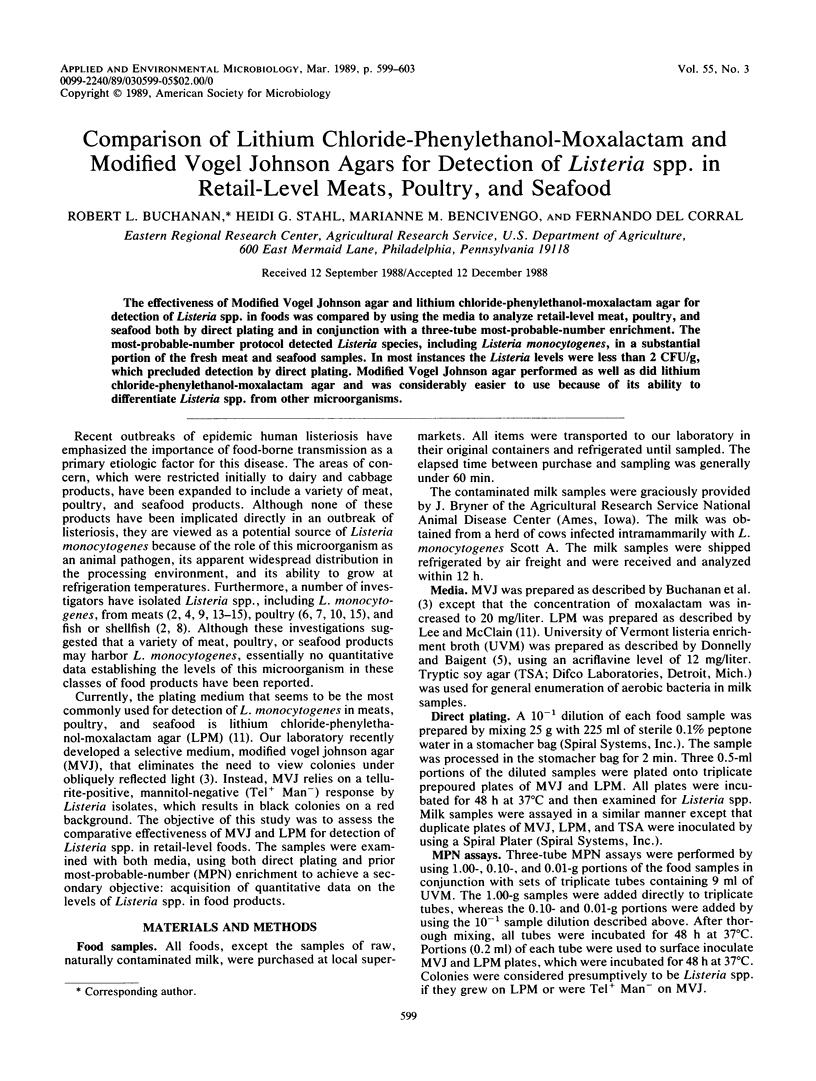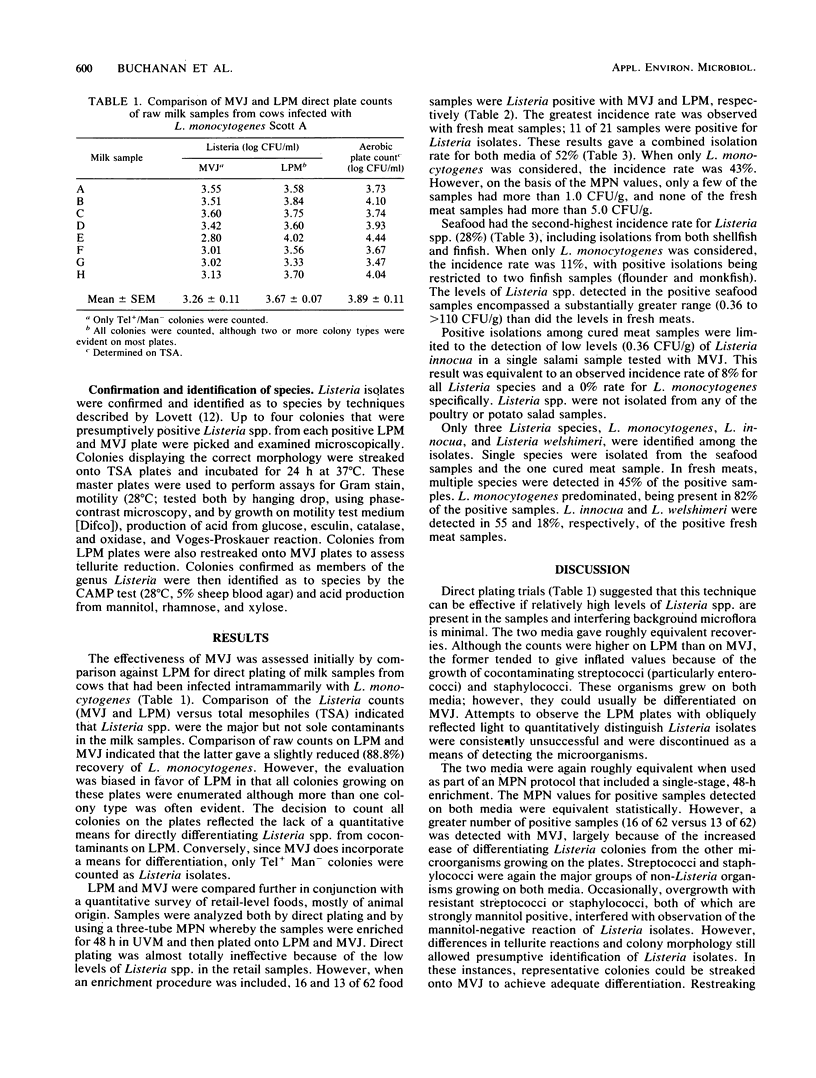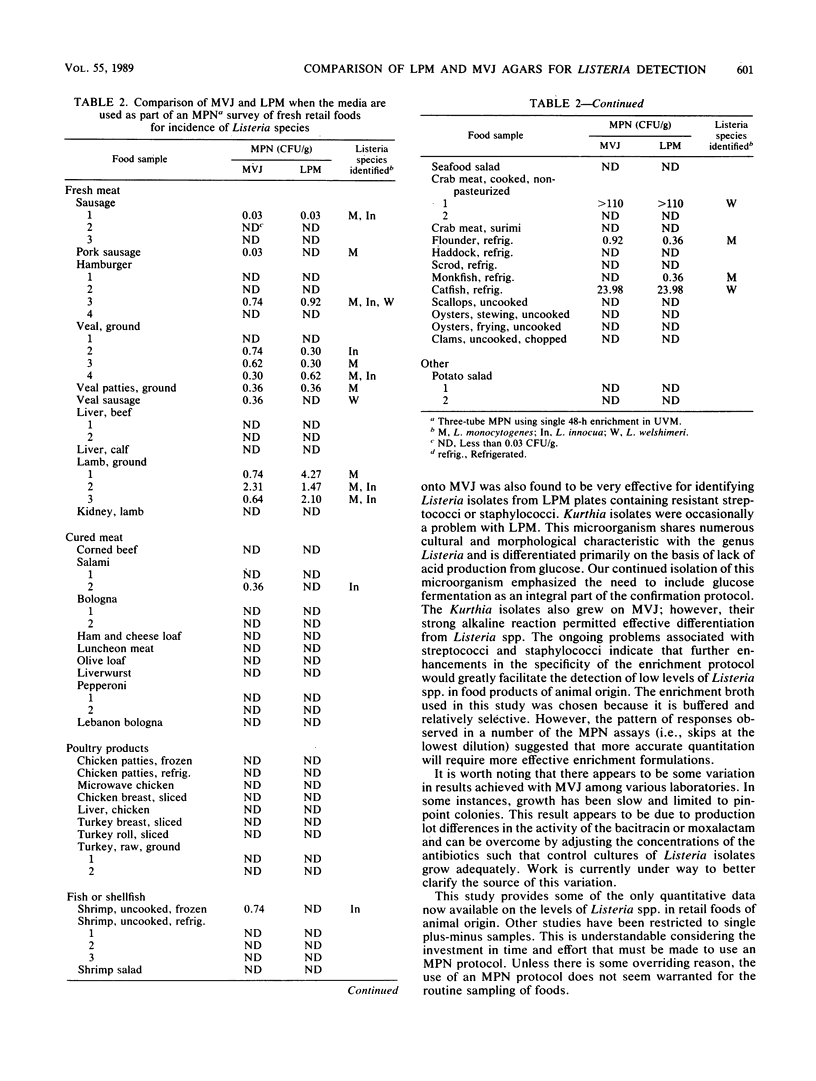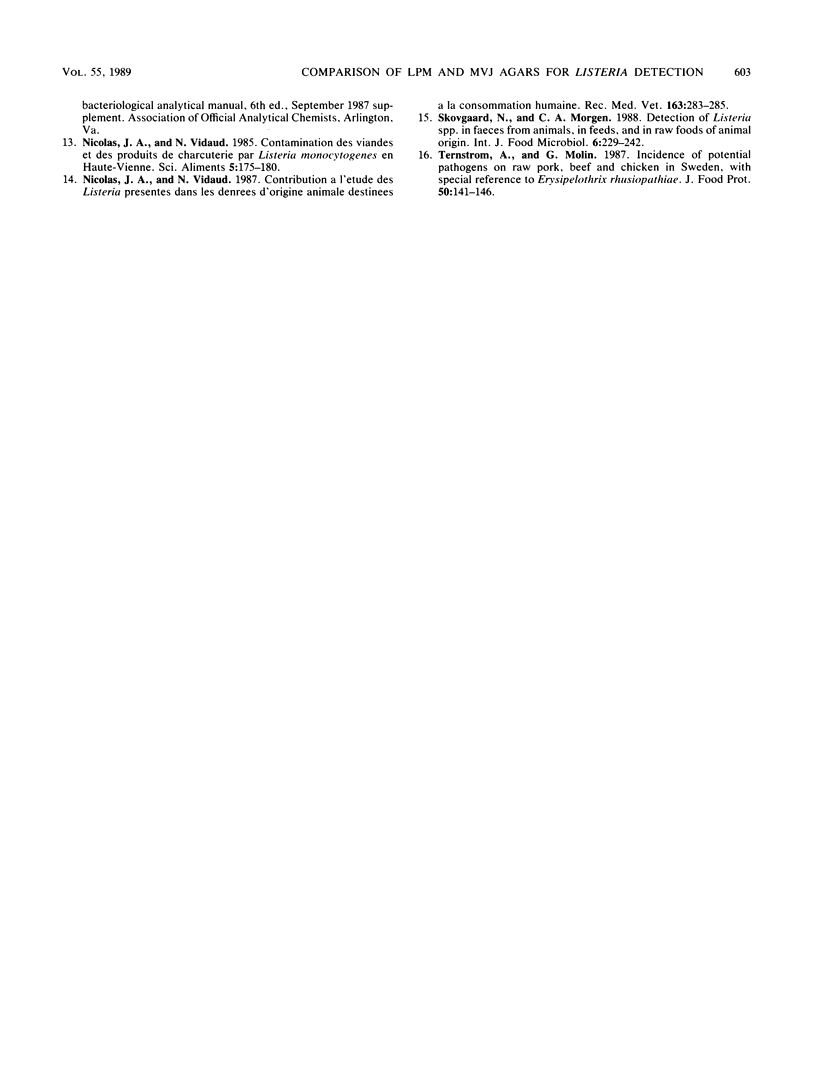Abstract
The effectiveness of Modified Vogel Johnson agar and lithium chloride-phenylethanol-moxalactam agar for detection of Listeria spp. in foods was compared by using the media to analyze retail-level meat, poultry, and seafood both by direct plating and in conjunction with a three-tube most-probable-number enrichment. The most-probable-number protocol detected Listeria species, including Listeria monocytogenes, in a substantial portion of the fresh meat and seafood samples. In most instances the Listeria levels were less than 2 CFU/g, which precluded detection by direct plating. Modified Vogel Johnson agar performed as well as did lithium chloride-phenylethanol-moxalactam agar and was considerably easier to use because of its ability to differentiate Listeria spp. from other microorganisms.
Full text
PDF




Selected References
These references are in PubMed. This may not be the complete list of references from this article.
- Andre P., Genicot A. Premier isolement de listeria welshimeri chez l'homme. Zentralbl Bakteriol Mikrobiol Hyg A. 1987 Mar;263(4):605–606. [PubMed] [Google Scholar]
- Donnelly C. W., Baigent G. J. Method for flow cytometric detection of Listeria monocytogenes in milk. Appl Environ Microbiol. 1986 Oct;52(4):689–695. doi: 10.1128/aem.52.4.689-695.1986. [DOI] [PMC free article] [PubMed] [Google Scholar]
- Gilbert R. J., Pini P. N. Listeriosis and food-borne transmission. Lancet. 1988 Feb 27;1(8583):472–473. doi: 10.1016/s0140-6736(88)91264-0. [DOI] [PubMed] [Google Scholar]
- Gitter M. Listeria monocytogenes in "oven-ready" poultry. Vet Rec. 1976 Oct 23;99(17):336–336. doi: 10.1136/vr.99.17.336. [DOI] [PubMed] [Google Scholar]
- Gray M. L., Killinger A. H. Listeria monocytogenes and listeric infections. Bacteriol Rev. 1966 Jun;30(2):309–382. doi: 10.1128/br.30.2.309-382.1966. [DOI] [PMC free article] [PubMed] [Google Scholar]
- Johnson J. L., Doyle M. P., Cassens R. G., Schoeni J. L. Fate of Listeria monocytogenes in tissues of experimentally infected cattle and in hard salami. Appl Environ Microbiol. 1988 Feb;54(2):497–501. doi: 10.1128/aem.54.2.497-501.1988. [DOI] [PMC free article] [PubMed] [Google Scholar]
- Kwantes W., Isaac M. Listeriosis. Br Med J. 1971 Oct 30;4(5782):296–297. doi: 10.1136/bmj.4.5782.296-a. [DOI] [PMC free article] [PubMed] [Google Scholar]
- Lee W. H., McClain D. Improved Listeria monocytogenes selective agar. Appl Environ Microbiol. 1986 Nov;52(5):1215–1217. doi: 10.1128/aem.52.5.1215-1217.1986. [DOI] [PMC free article] [PubMed] [Google Scholar]
- Skovgaard N., Morgen C. A. Detection of Listeria spp. in faeces from animals, in feeds, and in raw foods of animal origin. Int J Food Microbiol. 1988 May;6(3):229–242. doi: 10.1016/0168-1605(88)90015-3. [DOI] [PubMed] [Google Scholar]


